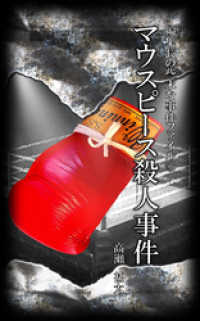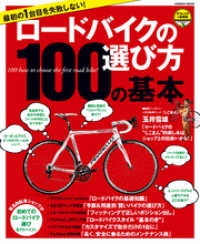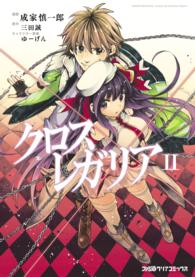- ホーム
- > 洋書
- > 英文書
- > Cinema / Film
Full Description
Alfred Hitchcock is arguably the most famous director to have ever made a film. Almost single-handedly he turned the suspense thriller into one of the most popular film genres of all time, while his Psycho updated the horror film and inspired two generations of directors to imitate and adapt this most Hitchcockian of movies. Yet while much scholarly and popular attention has focused on the director's oeuvre, until now there has been no extensive study of how Alfred Hitchcock's films and methods have affected and transformed the history of the film medium.
In this book, thirteen original essays by leading film scholars reveal the richness and variety of Alfred Hitchcock's legacy as they trace his shaping influence on particular films, filmmakers, genres, and even on film criticism. Some essays concentrate on films that imitate Hitchcock in diverse ways, including the movies of Brian de Palma and thrillers such as True Lies, The Silence of the Lambs, and Dead Again. Other essays look at genres that have been influenced by Hitchcock's work, including the 1970s paranoid thriller, the Italian giallo film, and the post-Psycho horror film. The remaining essays investigate developments within film culture and academic film study, including the enthusiasm of French New Wave filmmakers for Hitchcock's work, his influence on the filmic representation of violence in the post-studio Hollywood era, and the ways in which his films have become central texts for film theorists.
Contents
Introduction (David Boyd and R. Barton Palmer)
I: Psycho Recycled
1. For Ever Hitchcock: Psycho and Its Remakes (Constantine Verevis)
2. Hitchcockian Silence: Psycho and Jonathan Demme's The Silence of the Lambs (Lesley Brill)
II: The Return of the Repressed
3. Shadows of Shadow of a Doubt (Adam Knee)
4. Psycho or Psychic? Hitchcock, Dead Again, and the Paranormal (Ina Rae Hark)
III: The Politics of Intertextuality
5. The Hitchcock Romance and the '70s Paranoid Thriller (R. Barton Palmer)
6. Exposing the Lies of Hitchcock's Truth (Walter Metz)
IV: Found in Translation
7. Red Blood on White Bread: Hitchcock, Chabrol, and French Cinema (Richard Neupert)
8. "You're Tellin' Me You Didn't See": Hitchcock's Rear Window and Antonioni's Blow-Up (Frank P. Tomasulo)
9. Melo-Thriller: Hitchcock, Genre, and Nationalism in Pedro AlmodÓvar's Women on the Verge of a Nervous Breakdown (Ernesto R. Acevedo-MuÑoz)
10. "Knowing Too Much" about Hitchcock: The Genesis of the Italian Giallo (Philippe Met)
V: Theoretically Hitchcockian
11. Death at Work: Hitchcock's Violence and Spectator Identification (Robert Sklar)
12. Hitchcock and the Classical Paradigm (John Belton)
VI: Modus Operandi
13. How to Steal from Hitchcock (Thomas M. Leitch)
Notes on Contributors
Index
-

- 電子書籍
- クセ強彼女は床にいざなう【分冊版】 1…
-

- 電子書籍
- 編集長の些末な事件ファイル137 マウ…
-

- 電子書籍
- 最初の1台目を失敗しない! ロードバイ…
-

- 電子書籍
- クロス×レガリア(2) ファミ通クリア…




